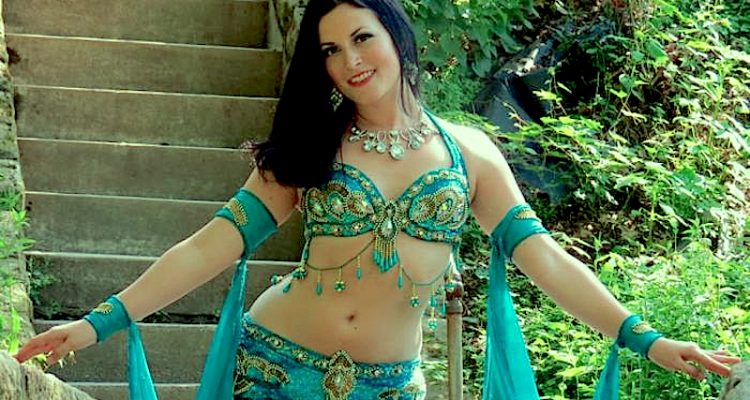Eyes ablaze, he commands, “Don’t let it die.” Monsignor Bakhos Chidiac musters his church in preparation for their 84th Annual Mahrajan on August 12th and 13th, celebrating the Assumption of the Blessed Mother Mary. Popularly referred to as the “Lebanese Fest,” Our Lady of Lebanon Maronite Catholic Church continues to celebrate its rich cultural heritage with the entire community through song and dance in Wheeling’s oldest ongoing festival. Father Bakhos has traversed the world like a soldier from his native Lebanon to Australia to countless ministerial posts in the United States. Here in Wheeling, he finds home within his church. Father Bakhos, throughout his past 17 years as pastor of Our Lady of Lebanon Church, seeks to keep his culture’s traditions alive within the hearts and minds of the old and young alike. A homecoming for the Lebanese people, the festival creates a space where families can travel great geographical distances in joining together underneath their ancestors’ eyes. Father Bakhos lifts up his hands and says, “The Gospels say, ‘Rejoice with those who rejoice, and weep with those who weep,’ but I say let us rejoice!”
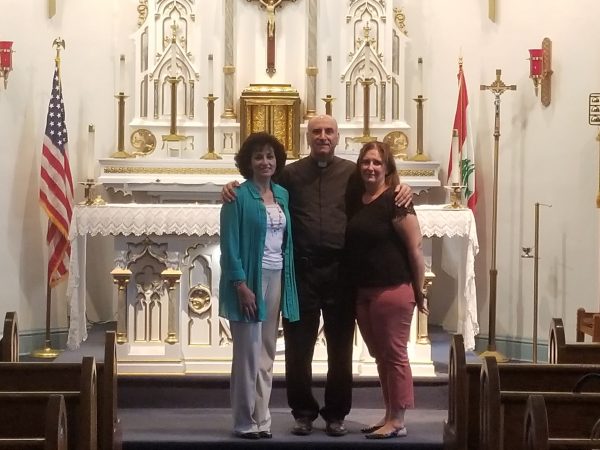
An historical significance placed on family and the overarching community permeates those mountains overlooking the Mediterranean and its descendants. The region of Lebanon has witnessed struggle, hardship, and violence. Throughout its history spanning over millennia, political unrest and civil wars have transformed it from a part of the Ottoman Empire into a French colony, and ultimately, into its current modern state. However, it would be grossly incorrect to root religious sectarianism and fanaticism within the mindset of its people. Since ancient times, foreigners fleeing persecution sought refuge within its grassy hills. Following the Council of Chalcedon in 451 AD, militant Jacobites slaughtered 350 Maronite monks in a monastery because of their orthodox beliefs. These followers of St. Maro fled and found a safe haven in Mount Lebanon.
Today, Muslims constitute approximately 54 percent of Lebanon’s population, while Christians make up about 40.5 percent, according to the CIA’s World Factbook. It is no secret that strife between these two religions, along with Judaism, has afflicted the Middle East. However, religious harmony existed quite prevalent between the region’s many sects of faith before its civil war of 1860. Its Christians and Muslims worked alongside each other in the agricultural rhythm of the year cultivating olives, wheat, and fruit. A communal identity transcending sectarian lines grew here. Along with sharing in daily labor, the Lebanese people remember a time where everyone, regardless of religious persuasion, participated in each other’s life-cycle rituals of birth, marriage, and death. At this point in history, the villages dotting the rocky Lebanese mountains were not segregated into ethnic quarters. Each village acted as a cohesive, homogeneous unit. Anja Peleikis, a doctor of sociology at the Martin Luther University of Germany, in a journal article recounts:
On the wedding day, Christian and Muslim neighbors accompanied the bride from her father’s house to the house of the groom, and, in the case of a Christian couple, everyone participated in the marriage ceremony at the church. Later on, the village celebrated the wedding, sharing food and drink, and performing the dabka-dance.
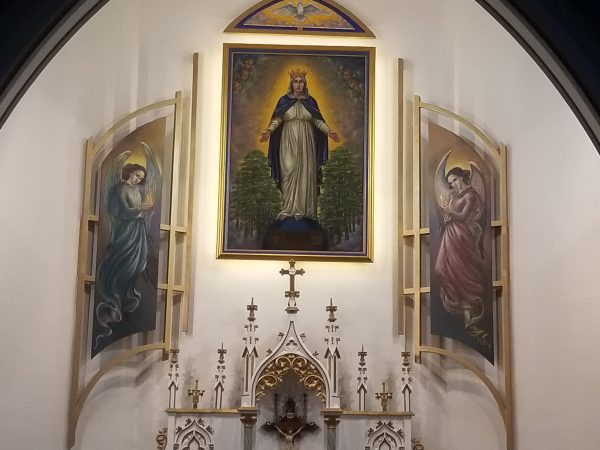
Both religions celebrated the Assumption together on the 15th of August in the form of a joyous procession from the Maronite church throughout the village streets. The civil war of 1860, and later its more recent conflict beginning in 1975, destroyed this beautiful state of unity. With its many religious sects politicized and pitted against each other, distrust and hatred between groups ensued. Villages became extremely segregated across religious lines, and many Maronite Christians escaped to the Western hemisphere. Wheeling, West Virginia became a refuge for these displaced Lebanese. In 1906, a young bearded Lebanese priest arrived here by the name of Paul Abraham, a man whose name has ascended into legendary proportions, and led a nomadic congregation without a permanent place of worship. These years presented even more obstacles for his people as they strove to build their own church. In 1922, they raised enough funds to construct the permanent location on Eoff Street. In the midst of the unceasing storm that was The Great Depression, Father Abraham awoke to his church enraptured within a blazing inferno. Everything was burnt to a crisp except a pristine oil painting of the Blessed Mother Mary. After the fire department arrived, it is documented that some force took ahold of the fire hose and deflected the water so that it did not harm the Blessed Mother’s visage. Falling 25 feet to the ground, it remained unscathed and still watches over the sanctuary today. The night following the disaster, Father Abraham and his dear friend Bishop Donahue dreamt a collective dream in which they both received a visitation from Mary herself. And so, they began the Feast of the Assumption as a picnic fundraiser to rebuild the church upon Oglebay’s grassy hilltop. The older members of his congregation remember dancing and singing with their parents, uncles, and aunts underneath trees where skinned lambs hung down in preparation for the evening’s dinner.
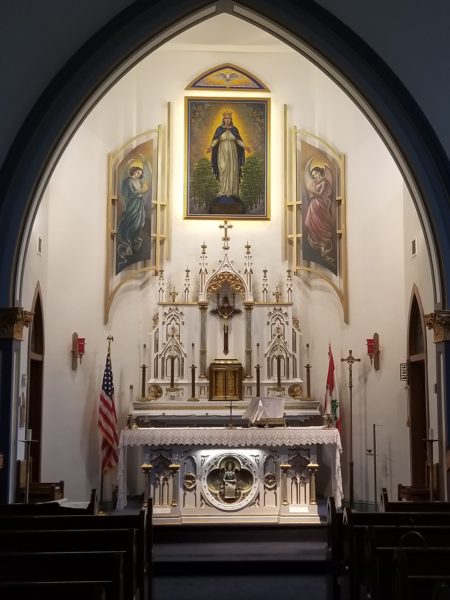
Father Bakhos welcomes me into the church, and we sit down accompanied with Susan John and Michelle Marinacci. He opens up our conversation as he asks the two others to recount their childhood memories. This festival links its people back into their past where their ancestors still do dance and sing. Susan’s father led the “John Trio” at the festivities in which he strummed the Lebanese form of a guitar, called an oud, while her uncle played the “debaki,” a drum, and her aunt sang. Originating as a fundraiser to rebuild the church, “Lebanese Fest” transformed into an annual tradition. Dabka, the Lebanese traditional form of dance, continues to enrapture its participants into a feverish dance. In this type of music, the debaki’s rhythm leads the dance in which the vocals sing enticement, and then everyone jumps into the lively, upbeat dance. Michelle remembers the festival as the primary event where she would spend time with her entire family, and specifically, her grandfather. Looking around the interior, she explains, “Here. His heart is here.”
“It means the whole world,” Father Bakohs begins. He recounts as he remembers a past festival, “I found a group of elderly women hugging and crying. I asked, ‘Why are you crying?’ They reply, ‘We are reminiscing. This is our childhood. We can see our ancestors here.'” Here, everyone becomes a part of a larger, collective soul lying at the heart of their culture.
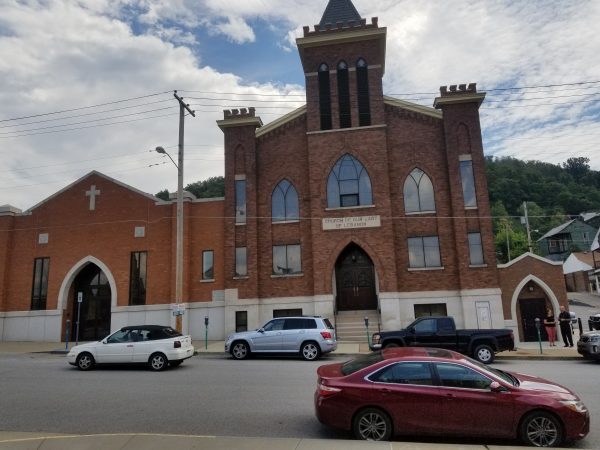
Our Lady of Lebanon Church is aging. Years ago, it boasted the number of a thousand families, but recently, it has dwindled to a very small congregation consisting of a mere 100-150 families. Regardless of this small number, Father Bakhos is extremely proud of his congregations devotion and can do attitude. “We are sponsored by the people,” he reveals. He explains that during his 17 years as pastor here, the church has never resorted to taking a loan, and always believed in the resiliency of its people. To this day, Lebanese Fest continues to be the number one fundraiser for the church. This year is especially unique because in the midst of an aging population, the Church’s youth has stepped up and convinced the elders to hold the event as a part of a two-day festival aimed at garnering a younger crowd to revel and celebrate within their culture’s legacy of joy and self-determinism.
The festival will be complete with catered Lebanese specialty dishes, professional musicians, and belly dancers at the Levenson Shelter in Oglebay Park. On Saturday August 12th, it will be held from 4pm to 10 pm. On Sunday August 13th, it will occur from Noon to 7pm.


